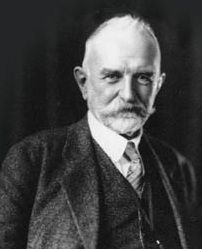Labeling Theory, as introduced by George Herbert Mead (as pictured), states that the self is constantly socially constructed and reconstructed based on someone’s relationship with their community. Howard Becker, Erving Goffman, David Matza, Albert Memmi, Edwin Lemert, Frank Tannenbaum, George Herbert Mead all contributed to this theory.¹
Deviance is not inherent to the act, but instead the result of externally-imposed label of ‘deviant.’ If a community labels someone as ‘deviant’ that individual will integrate this label into their sense of self. This then changes their perceived social role and how their further interaction with the world. ¹
The Roots of Labelling Theory began in Emile Durkheim’s book ‘Suicide’. Durkheim believed that crime is not so much a violation of the penal code so much as it is an act that outrages society.¹ He was the first to suggest that deviant labeling satisfies society’s need to control that behavior.
People obtain labels from how others view their behaviors and each individual is aware of how they are judged. This process builds a subjective conception of oneself. Others intrude into that reality and that intrusion represents objective data from which you must re-evaluate your conception depending on how authoritative that judgement is.¹
Not everyone’s judgement is equal. This depends on factors such as¹:
- People who are close to you vs. strangers
- Authority figures vs. equals or subordinates
- People you trust/admire vs. people you do not
The power of a group lies in designating breaches of their rules as deviant and treating that person differently depending on seriousness of the breach. The more someone’s treated differently, the more their self-image is affected.¹
Howard Becker aptly said “deviance is not a quality of the act the person commits, but rather a consequence of the application by other of rules and sanctions to an 'offender.' The deviant is one to whom that label has been successfully applied; deviant behavior is behavior that people so label.”¹
Reference:
1. Boundless. Labeling Theory. Retrieved May 8, 2014, from https://www.boundless.com/sociology/understanding-deviance-social-control-and-crime/the-symbolic-interactionalist-perspective--4/labeling-theory/
© BrainMass Inc. brainmass.com July 26, 2024, 4:39 am ad1c9bdddf